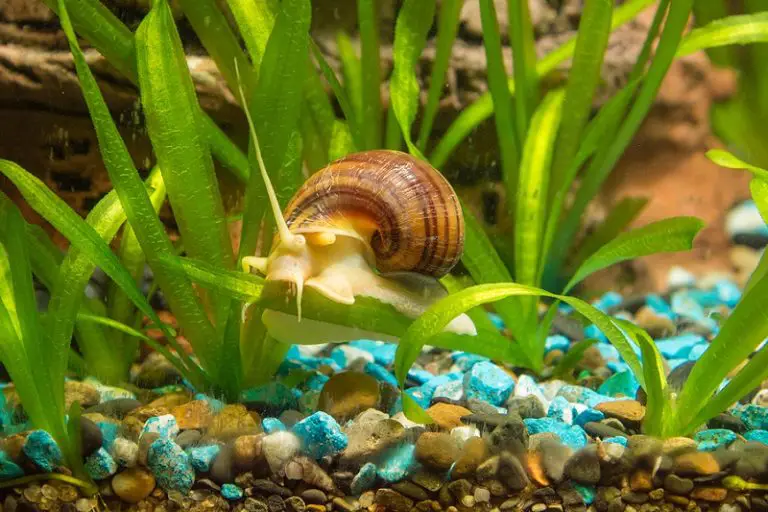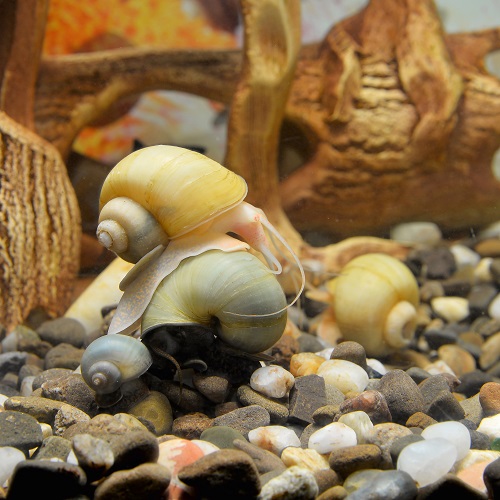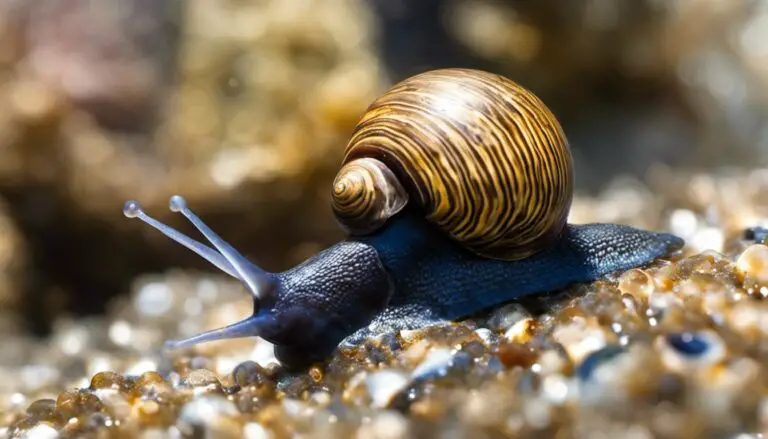Do Snails Have A Foot? [Full Guide]

A lot of people have heard that snails have a “foot,” but is that true? Do Snails Have A Foot? Snails do in fact, have a foot, but they do not have feet. Referring to a snail’s foot as a “foot” creates a bit of confusion because they’re really not like any kind of feet that we generally think of.

A snail’s foot is similar to ours in that it helps them to get around. However, that’s really where the similarities stop. Below, I fully answer the question does a snail have a foot? while talking about the general anatomy of a snail and talking about whether a snail has legs.
Contents
Table of Contents
Basic Anatomy Of A Snail
Not only is a snail’s foot very different from our own feet, but their anatomy in general is very different than most other animals.
External Anatomy
A snail’s external body consists mainly of two components: the shell and its soft body.
- Shell: a solid, spiral-shaped covering made of calcium carbonate and protein.
- Ostracum: two layers of calcium carbonate crystals below the outer layer.
- Hipostracum: the layer below the Ostracum.
- Periostracum: the innermost layer made of protein.
- Whorl: a single 360 degree rotation from the center of the snail’s body at birth. As the snail grows, the shell grows around the central whirl, eventually creating several of them.
- Soft Body: a soft body with a viscous texture, lacking a skeleton.
- Muscular Ventral Foot: the bottom-most part of the snail that helps it to move.
- Tentacles: one or two pairs on the head that act as eyes and a nose.
- The upper tentacles are usually longer and have a set of eyes at the top of them. Each eye contains a retina, lens, and optic nerve, similar to human eyes.
- The lower tentacles are usually shorter and are used for taste and smell.
- Snails cannot see well and can only sense changes in light (i.e. night and day).
- Outer Skin Fold: tissue that protects the internal organs and covers the shell and mantle cavity.
- Mouth: at the bottom of the head below the tentacles.
- Radula: a sharp structure in the mouth consisting of rows of teeth. The radula helps the snail to scrape food.
Internal Anatomy
Unlike humans and most animals, the internal structure of a snail is not divided into sections. Instead, all of the organs can be found together in a singular mass protected by the shell. This mass is called the mantle cavity.
Here are some organs that can be found within a snail:
- Lung or Gills: To breathe, terrestrial snails have a lung, while aquatic snails will have a set of gills.
- Some snails contain both a lung and gills and can travel between water and land. To learn more about this process, read our full guide here to how snails’ breath.
- Heart
- Ganglia: This is the snail’s version of a brain, because they don’t actually have one. Rather than a brain, snails contain a set of nerve cells that inhabit the ganglia.
- Nerve cells in the ganglia emit neurosecretions that tell the snail’s body what to do.
- Although their brain is primitive, snails have excellent associative thought to remember where they’ve been before. This is especially helpful since they are all but blind and deaf.
- Nerves in the snail’s body also allow it to feel any kind of touch or pain. This allows them to sense danger and retreat into their shell.
- Digestive Gland: Snails contain a esophagus and stomach and the food passes out their anus.
- Reproductive Organs: For reproductive purposes, a snail has a penis and/or vagina. Some are hermaphrodites and can reproduce asexually, while other snails are separated by gender and must reproduce sexually.
- Statocysts: hollow balloon-like structures surrounded by cells in the foot of the snail. The structure is filled with lymphatic fluid and ciliate (hair-like structures).
- Floating inside the statocysts are statoconia, or calcium particles.
- Statoconia tells snails whether they are upright or upside down based on where the statoconia floats.
- When the statoconia floats upward, the snail is upright. When it floats downward, the snail is upside down.
- The cilia is believed to give snails a sense of hearing since they lack any ears.
The Process of Torsion
While a snail is developing, it will go through a process called “torsion” while it is in the larval stage of development.
During torsion, the mantle cavity rotates 180 degrees so that the anus, shell, and visceral mass are placed above its head.
Do Snails Have A Foot?
Snails do, in fact, have a foot, but it is not how we normally think of feet as we have them or as most animals have them. A snail’s foot consists of layers of muscles that move in a wave-like motion to help the snail move. The foot also secretes a layer of slimy mucous that helps the snail to move along with the contraction of muscles.
The mucous is so effective in helping a snail move around that they can stick to almost anything, including glass. They can even crawl straight up the sides of objects and can maneuver upside down.
Watch this video: Do Snails Have A Foot? [Full Guide]
How Many Feet Do Snails Have?
Snails don’t really have feet in the way that we think of feet. Their foot is really just a muscular mass on the bottom of their soft body that helps them to move around.
Because of this, snails only have one foot.
In short, here is how a snail’s foot compares to a humans:
| Snails | Humans | |
| Has Bones | No | Yes |
| Has Muscles | Yes | Yes |
| Secretes Mucous | Yes | No |
| Helps Organism to Move | Yes | Yes |
| Foot is Attached to a Limb | No | Yes |
Do Snails Have Legs?
When people first hear of a snail having a “foot”, they may be wondering, does a snail have legs? How many legs do snails have? But of course, snails don’t have any legs.
A snail’s foot is simply a muscular structure at the bottom of their body that helps them to move around. It is not attached to any limbs like our feet are to our legs.
Conclusion
Snails absolutely do have a foot! Every snail has one, and they are full of muscles to help the snail crawl around and get places.
However, snails only have one foot, and they don’t have any legs. In that respect, they are not much like human or mammal feet at all. Still, they are used for the same purpose.
Want to know if snails can change shells? Read our guide here. You can also find all our snail guides here.







![Can You Eat Apple Snails? [Read This First!]](https://allourcreatures.com/wp-content/uploads/2021/11/eating-snails-768x514.jpg)